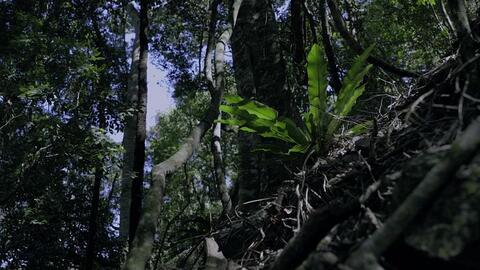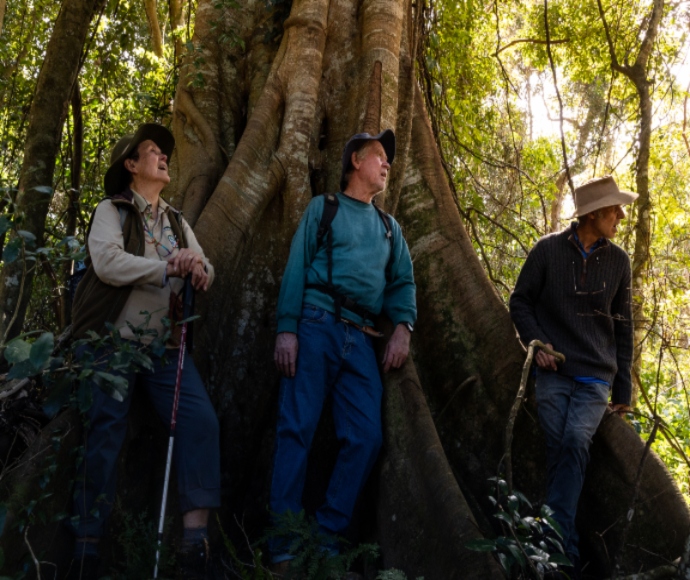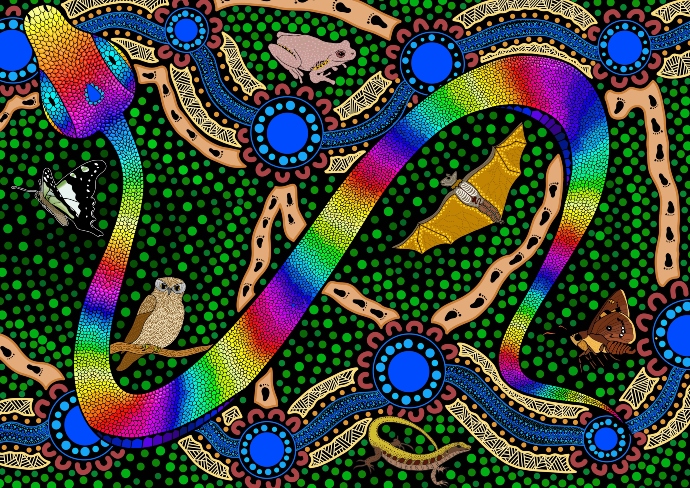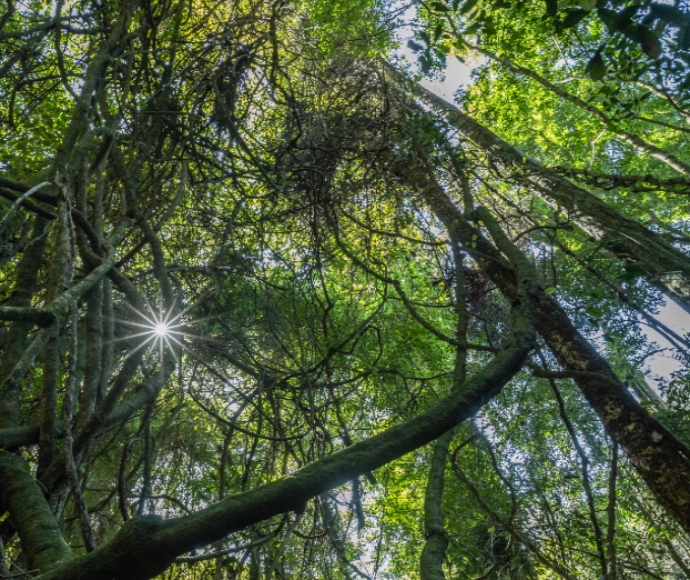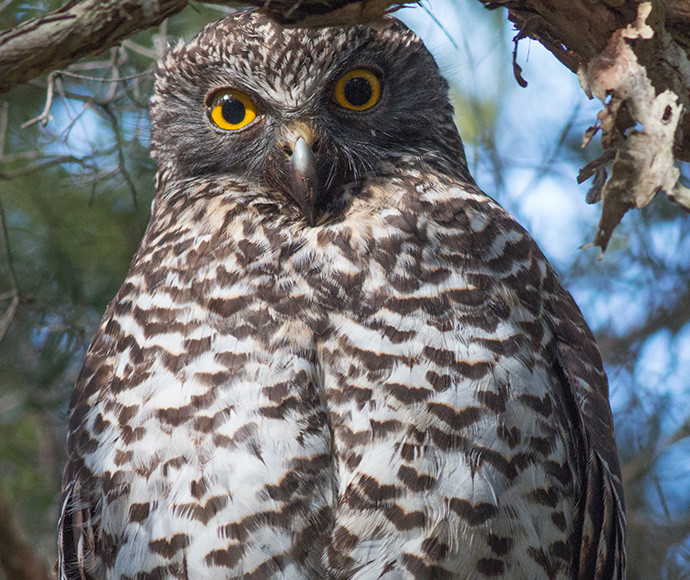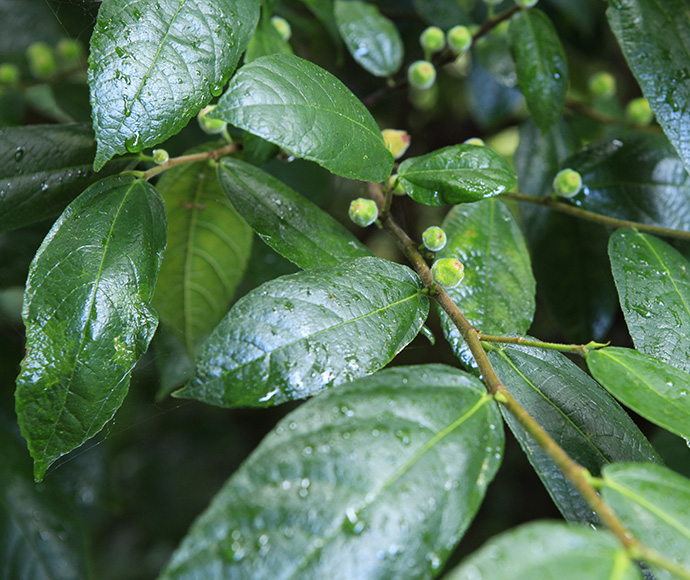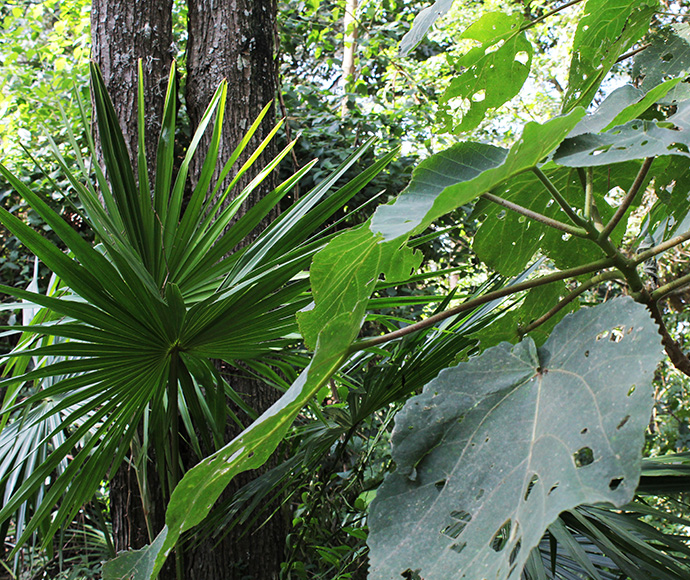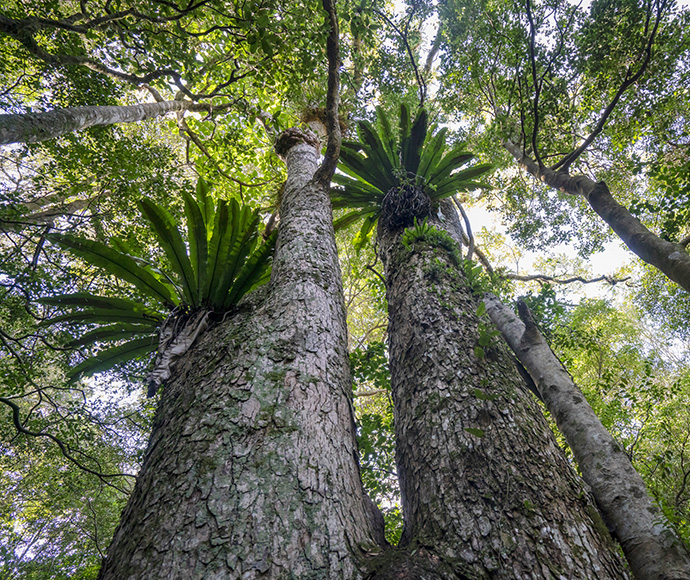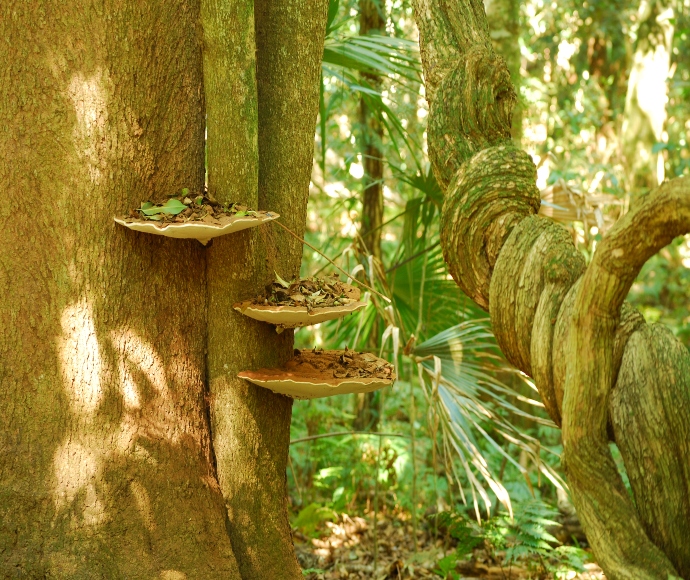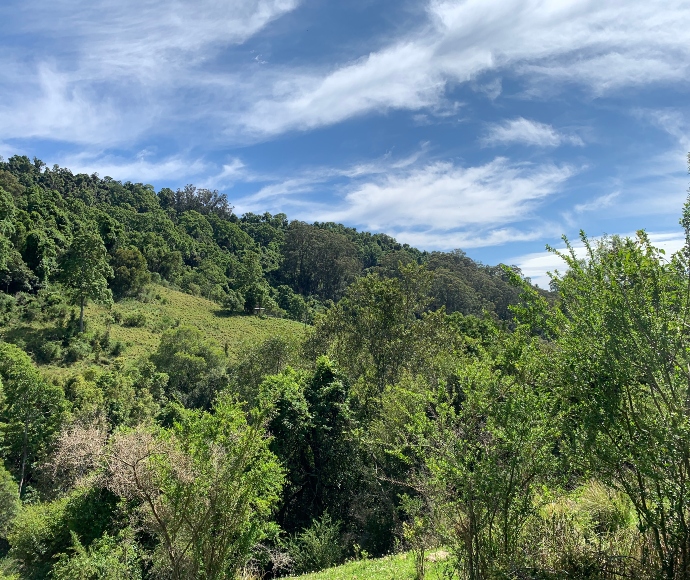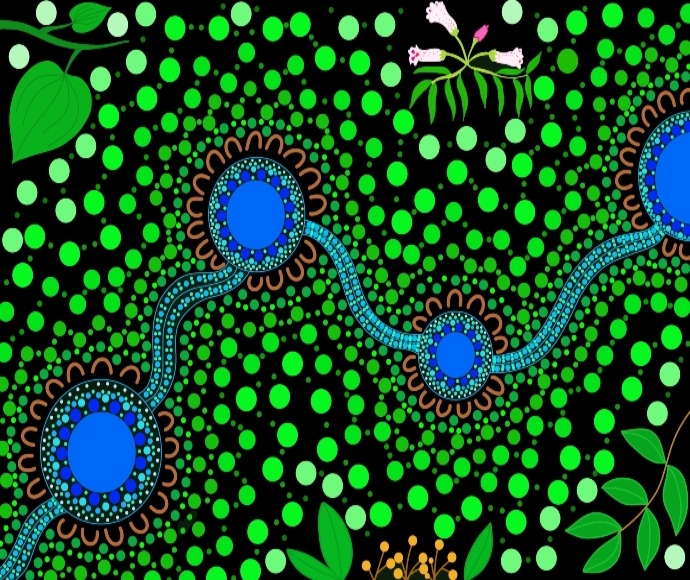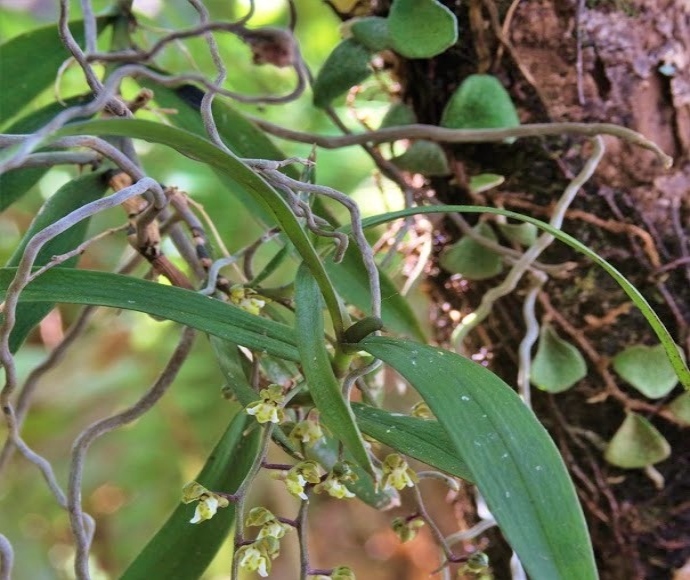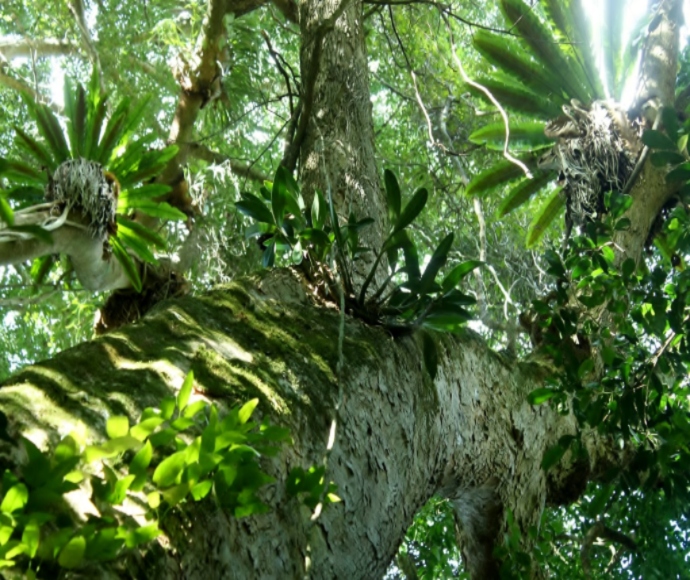Milton Ulladulla subtropical rainforest revival
Our rainforests are precious and contain some of the oldest lineages of plants and animals on Earth.
In Australia, however, less than 0.2% of the original rainforest footprint remains. One of these remnants is the Milton Ulladulla subtropical rainforest (MUSTR), an endangered ecological community restricted to the volcanic soils of the Milton and Ulladulla area on the NSW South Coast.
Why is it important?
Milton Ulladulla subtropical rainforest is a dry rainforest, characterised by big vines, sometimes hundreds of years old, that dominate the plant community. Found in gullies and steep slopes, Milton Ulladulla subtropical rainforest has a dense canopy, ferny and rocky understory and a high diversity of lianas which make the rainforest a shady, tangled oasis. Large figs poke through the canopy of giant stinging tree (Dendrocnide excelsa) and red cedar (Toona ciliata), while brittlewood (Clayoxylon australe), lilli pillis (Syzygium spp) and muttonwood (Myrsine variabilis) cluster below.
Milton Ulladulla subtropical rainforest is the southern-most extent of subtropical rainforest in eastern Australia and is home to important plants including the large strangling deciduous fig (Ficus superba subsp. henneana), whalebone (Streblus brunonianus), endangered scrub turpentine (Rhodamnia rubescens) and bollygum (Litsea reticulata). It also provides habitat for threatened wildlife including the grey-headed flying-fox (Pteropus poliocephalus), powerful owl (Ninox strenua) and spotted-tailed quoll (Dasyurus maculatus maculatus).
Why is it threatened?
Only a few hundred years ago, Milton Ulladulla subtropical rainforest covered an area of more than 5,000 hectares around the present-day town of Milton on the NSW South Coast. Historical clearing for roads and agriculture drastically reduced its original extent by 87%. Today only approximately 650 hectares remain. Of this, 60% was severely impacted or lost in the 2019–2020 bushfires.
Today much of the remaining subtropical rainforest occurs on private land, aside from patches in Yatte Yattah Nature Reserve and the Milton Rainforest Reserve. These small and fragmented remnants are surrounded by agricultural land.
The survival of Milton Ulladulla subtropical rainforest is under threat from domestic stock, light intrusion, wind and weed invasion, clearing and fragmentation.
If you live around Milton and have rainforest on your property, it is highly likely that it is Milton Ulladulla subtropical rainforest and an important remnant of this endangered ecological community.
Rainforest revival
The project undertakes actions that target key threats to the rainforest. Working together to protect MUSTR not only benefits this endangered ecological community but also helps the Milton community through supporting improved farm practices, local employment, and community cohesion, particularly after the devastating 2019–2020 bushfires.
Between 2016 and 2022 the project has achieved:
- planting 7500 seedlings over 7 hectares
- a 2.5% increase to the area of the rainforest as a result of the plantings
- 24 hectares of remnants fenced to protect from stock incursion
- weeding of 20 hectares of rainforest.
Forests and farmers
The Rainforest Revival project is providing funding and support for landholders to plant trees on their farms, helping to create shelterbelts that improve stock health and production outcomes, and creating biodiverse environments.
'The tree plantings create fantastic wind breaks and shade for our dairy cattle. One day of strong westerlies can remove the equivalent of 25mm of rain from our soils - but those paddocks adjacent to rainforest plantings are protected from the winds and retain soil moisture for good pasture growth.'
Robert Miller, fifth-generation dairy farmer and landholder involved in the Rainforest Revival project.
Through a partnership with Milton Rural Landcare, landholders involved in the project have access to local skills and knowledge and contribute to the long-term goals of forest recovery in the Shoalhaven. Further, the project provides landholders with the opportunity to engage in bushfire recovery and to build resilience in forests and people.
Opportunities for landholders
The MUSTR Rainforest Revival project is looking for landholders who are interested in conserving rainforest remnants on their land. Contact us to find out how to:
- join the project and protect the rainforest on your property
- receive a free assessment of the historical and current footprint of rainforest on your property
- get assistance in developing a farm plan to help you achieve your property goals in conjunction with Local Land Services
- stay abreast of funding opportunities available to help with habitat conservation
- access funding for fencing, revegetation, shelter belt planting and weed control
- join our partner organisations such as Budawang Coast Atlas of Life, Milton Rural Landcare, Shoalhaven City Council Bushcare and Shoalhaven Landcare.
<div class="callout" style="min-height: 100px;">
<p>Register as an interested landholder.</p>
<p><a href="mailto:[email protected]" class="btn btn-primary">Register and find out more</a></p>
</div>
Cultural values
Murramarang artist Taylor Budjaan Carriage was engaged to create an artwork to help promote an understanding of the importance of Milton Ulladulla subtropical rainforest from an Indigenous perspective.
'As a Murramarang woman, it's a great honour for me to be able to contribute to this project, which is working to protect and restore the rainforest which housed, fed, and watered my ancestors and our land for thousands of years. In our dreaming stories, the Rainbow Serpent carved out the water ways as he slithered through the land, bringing water and life to the country. This is why I have centred the mural around the Serpent, representing the bringing of life and restoration of clean waters in the rainforest just as the Serpent did during the dreamtime. Creeks and pools of water frame the mural, as they are what brings and maintains life here, and were the gathering place of our people. You can also see the people gathered around it, as we would have for thousands of years, to gather water, to rest in the shelter of the forest, and collect food and supplies from the area. Around the waterways there are web-like patterns to represent how all things in the forest are connected by the water, as it brings life to all things that live here.
Today and for generations past, there have always been paths which were walked by our ancestors all through this forest as we moved from one camp to another or as we sought food and water in our land. The footsteps of our ancestors are represented in this mural; as we tread where they once trod, we must remember that it is our responsibility now as it was theirs then to maintain and protect our land, our country. Depictions of some of the native species of fauna are shown around the picture, these beautiful creatures, who rely on this forest as a home just as we once did, need our protection too. The fauna included here are the Peron's tree frog, Trapezites symmomus butterfly, eastern water skink, grey hooded flying fox, Macleay's swallowtail butterfly, and a young powerful owl.
Finally, the backdrop of the image is coloured black to represent the soil underneath all of this. The soil in the Milton Rainforest is unique, it contains Milton monzonite, which makes the soil fertile for growth and life. The soil, the earth, the ground beneath us, is the most important thing we have in this world, and we need to care for it. It has always been the responsibility of my people to care this area, and now it is yours too. We only have one Milton Rainforest, we only have one Country, and we only have one Earth. Let's protect her while we still can.'
Taylor Budjaan Carriage, Murramarang Artist.
Partners
The MUSTR Rainforest Revival project is led by the NSW Government's Saving our Species program in partnership with Milton Rural Landcare, local landholders, NSW National Parks and Wildlife Service, Shoalhaven City Council, Shoalhaven Landcare, and Local Land Services.
This project has provided many benefits to the community, including encouraging better farm practices, local employment, and community cohesion, particularly after the recent devastating bushfires.
This project is supported by the Australian Government's $200 million Bushfire Recovery for Wildlife and their Habitats.
